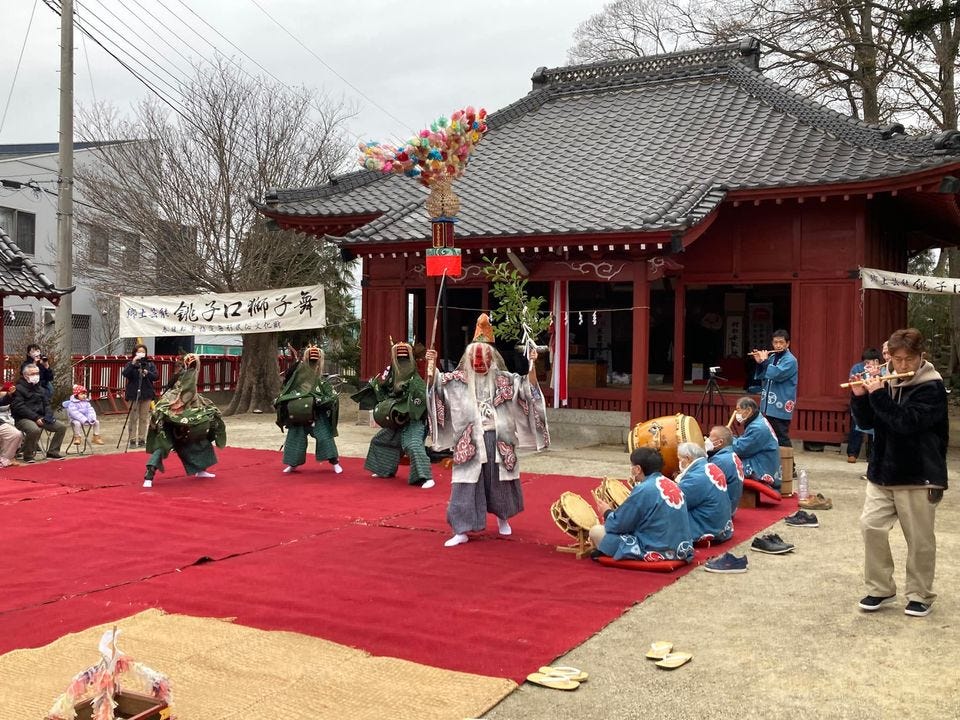Crypto Village Newsletter #46 - 9/30
Welcome back to our News Letter!
A huge thank you to all our new subscribers! This newsletter is brought to you by Crypto Village, where we share the latest updates on the Nishikigoi NFT project, Japanese local NFT initiatives, and much more.
The News of the Week:
A New Challenge in the Age of Population Decline
This is the part 1 of a blog post series originally published in a Japanese magazine.
Sixteen Years of Shrinking Numbers and the Struggle to Keep Traditions Alive
Just the other day, the news reported that Japan’s population dropped by another 910,000 people compared to last year — marking the 16th year in a row of decline. As of July 2025, Japan’s population now stands at about 123.3 million.※1
We often hear that population decline creates many challenges for society as a whole. But what does it mean for local traditions and cultural practices? How is this decline already changing the way communities celebrate and pass down their heritage?
In this month’s Sotokoto, we’ll take a closer look at how festivals and traditional events across Japan are being reshaped as fewer people are around to carry them on. We’ll also think together about what this means for the future of culture and community life.
Across Japan, countless traditions and cultural practices have been carefully passed down through generations. One example is ushi no tsunotsuki (bull sumo) in Yamakoshi, Niigata — also known through the Nishikigoi NFT project. But now, with fewer young people and an aging population, many communities are struggling to find enough ninaite — the people who play a key role in making these festivals and rituals possible.
This tough reality has also sparked something new: a reason for change. Communities are beginning to rethink rules and customs that were once followed without question, exploring new ways to keep traditions alive in the future.
In this article, we’ll look at how these shifts are breathing new energy into local culture — and how they might hold clues for the broader challenge of regional revitalization.
A New Chapter for Tradition
Women Taking the Lead and Bringing Fresh Energy
For a long time, many festivals and traditional arts in Japan did not allow women to participate. This was often due to religious reasons rooted in Shinto beliefs or the physical demands of certain roles. These customs were passed down for generations as the natural order of things.
In recent years, however, as communities face a shortage of participants, many regions have begun to rethink these rules. To preserve tradition, previously closed doors are being opened. As a result, women are stepping in as new bearers of cultural heritage, bringing fresh energy to traditional practices.
For example, in Choshiguchi, Kasukabe City, Saitama Prefecture, women have started performing in the local lion dance, a role traditionally reserved for men. With fewer young men available to carry on the tradition, welcoming women has become a practical and meaningful solution. Watching them perform is a refreshing sight for the community and a clear step toward widening participation. It shows how traditions can adapt flexibly to ensure they survive.
Similar changes are happening in traditional crafts. Edo Kiriko glass cutting, once dominated by men due to the physically demanding production process, has shifted as market demands now favor delicate, intricate designs. Women, with their skill and precision, have stepped in and are thriving in this craft. Their work introduces modern design elements while honoring tradition, creating pieces that appeal to younger generations and expanding the possibilities of this centuries-old art.
In these ways, women’s participation in traditional culture is more than just a practical response to labor shortages. It brings new perspectives and energy, helping traditions evolve and continue for the next generation.
■ Socials
Nishikigoi NFT Official Website
■NFT Marketplace
Opensea



